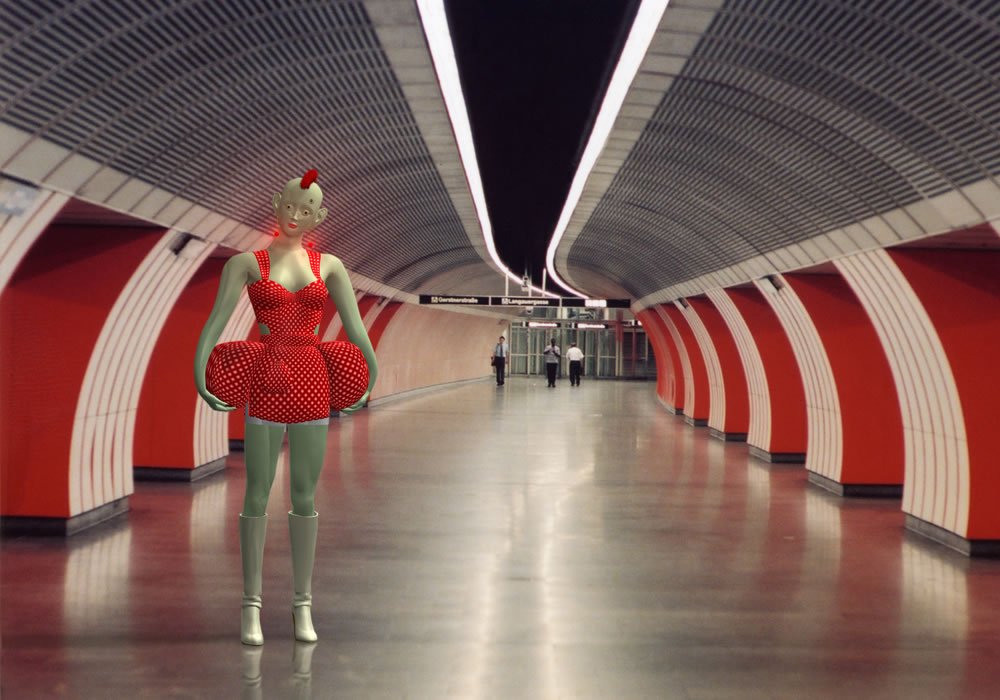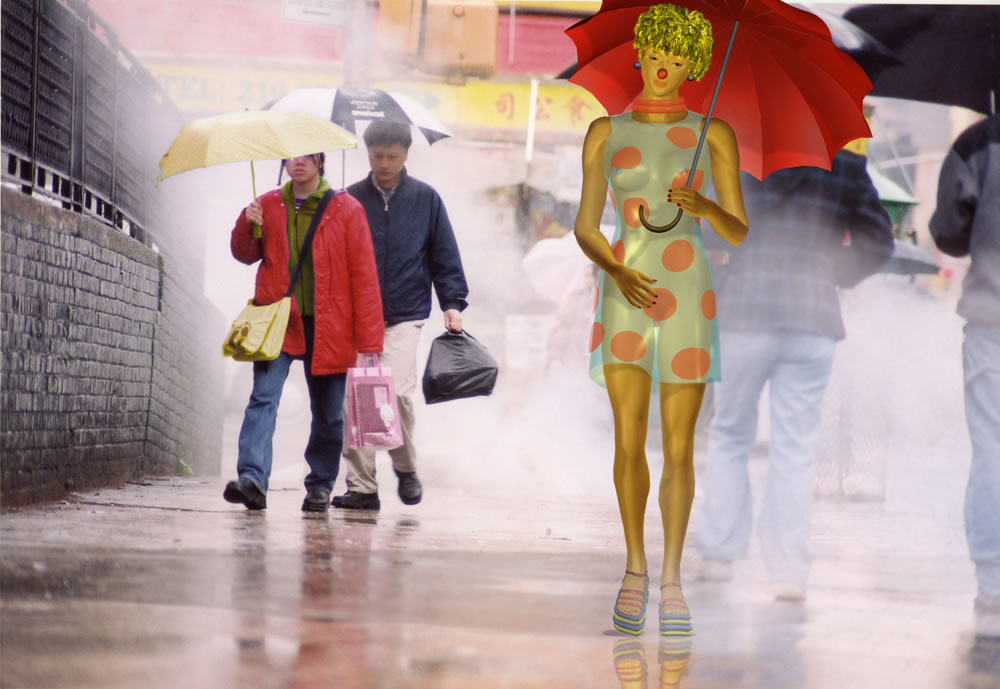









E: The Virtual Supermodel, 2002-2004
E represents the condition of the contemporary woman in today's post-industrial, technological society. E can mutate her face and body, adapting it to coordinate to the style of her clothing, here all the designs of my own creation mixed with those of the most extreme idea-driven designers of contemporary fashion. E is beautiful, but she is nevertheless the ultimate fashion victim: her face is so mutable that its transformations render her actually faceless. Converging the potential of bioengineering with the contemporary reality of endless fashion-based marketing cycles, E is a metaphor of woman as the ultimate consumer product in a dystopic future world in which the artificial has uneasily crossed the boundary of the real.
-Claudia Hart, 2002
At the time of this writing, winter 2024, the English curator Sarah Atkinson, contacted me. She wanted to exhibit E, a character I created in 2002, in an exhibition at King’s College, part of the Royal College of Art, in London. The exhibition was more or less “cyber feminism.” Sarah told me that E was the first cyborg fashionista, “by far.” The following week, a second curator, Yvette Granta, a professor at the University of Michigan, Ann Arbor, contacted me with a similar exhibition request. So I searched my harddrives for evidence.
I found a catalog for a show called Fetish: Human Fantastic, organized by the curator Michele Thursz, active in those days, and I believe also the first to work with cultural shifts that MIGHT be engendered by the computer. None had happened yet, and computer culture was at that time still far from ubiquitous.
Michele and I were intellectual partners-in-crime, talking at length about what the future might bring. I find it prescient to quote from that 2002 catalog for an exhibit that was held at the Borusan Culture and Art Center in Istanbul. Ahmet Kocabıyık, the honorary Chairman of the board of directors of the Borusan Holding Company, that sponsored the Borusan Cultural Center in 2002, has since become one of the major collectors of digital art, with a private museum in Istanbul that collects my animations.
-My text for Fetish: Human Fantastic
Last spring I visited an exhibition at the Metropolitan Museum, together with Michele, the curator of this show. That other show, in New York, was called Extreme Beauty (the Body Transformed), and beautiful it was. We found wildly distorted mannerist costumes, ranging from contemporary visionaries like the fashion designers Alexander McQueen and Jean Paul Gaultier, to Burmese women with neck-extending brass coil collars and ancient Chinese Lotus boots. It struck me then that with advanced technologies and bioengineering, we now stand on the brink of being able to similarly redesign our bodies. We humans have always felt a need to be more than human. Maybe we want to look like gods or the creatures of myths, or maybe just to act like them by reinventing the human form at wim, to make it into art, ourselves into painted birds. With that in mind, I set out to design a fashion model of the future who could reengineer her face to match her dress. Using high-end 3D software, I designed E, a virtual avatar who can deform her body and features to conform to any ambiance.....
-Text by Michelle Thursz for Fetish: Human Fantastic
The intervention of 3d animation with communications platforms creates a new interactive cinematic quality of games. Claudia Hart introduces her character E as a being that can deform her features and body to correspond to any ambiance. Historically, reconfiguration of a main character within a narrative setting makes reference to psychological role-playing. This artistic gesture is most prevalent in the practices of the surrealists. As seen in Dorothea Tanning's Birthday (1942), the artist herself appears to the viewer as a bare-breasted enchantress. In the era of surrealism, the image of the woman was predominantly a projection of male fantasy. Tanning and Hart elevate rather than diminish the female sex, sometimes assuming the role of a character themselves, connecting the art viscerally with the artist. Hart's E also alludes to the prismatic quality of the new art form, as the nature of E can be revealed in a variety of forms. E will be presented as prints in the gallery setting, although the character could be adapted into cinema or assimilated into fashion.
Recently, I viewed Alexander McQueen's spring line, hinting at Marcel Duchamp ready-mades and a surrealist affectation for quasi-magical beings. McQueen, like Hart and previous artists of the surrealist movement, have incorporated the female figure, transforming it into an alluring super fantastic extension of the landscape and of human form. Historically artists have used the female figure both literally and abstractly, to evoke the desire for ultimate perfection. As the surrealist Hans Bellmer declared, “I shall construct an artificial girl whose anatomy will make it possible to physically recreate the dizzy heights of passion…”